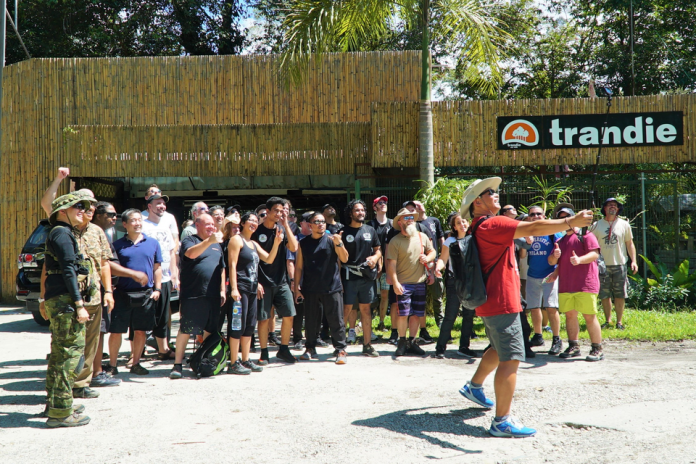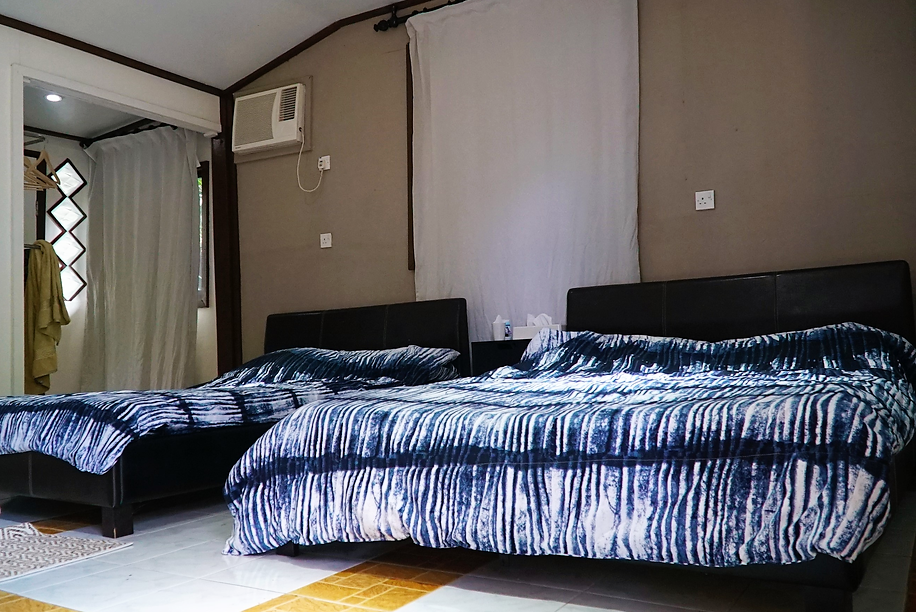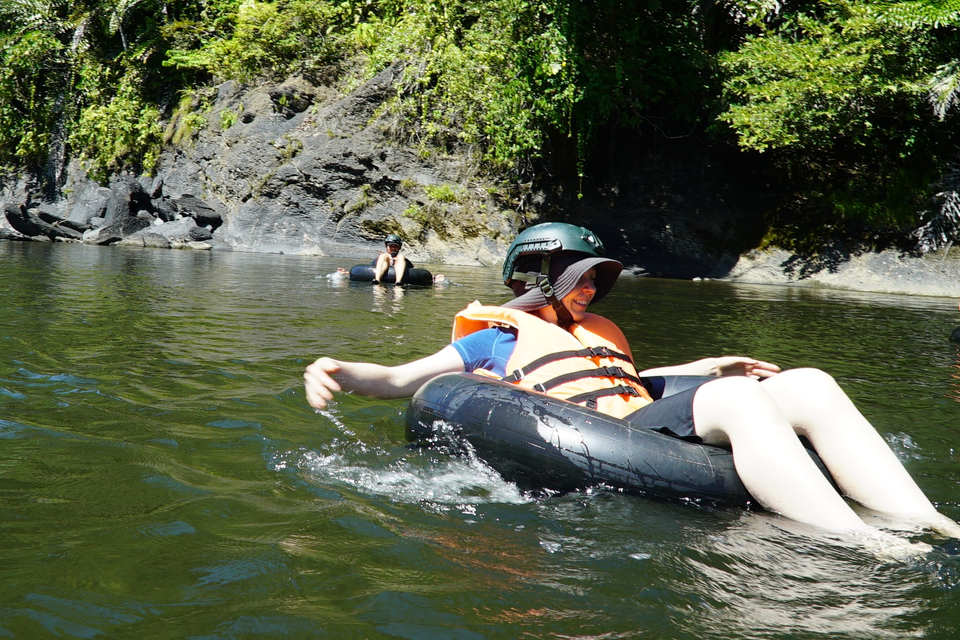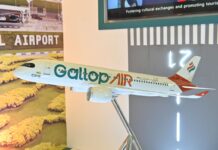In a pair of Vans-styled slip-on sneakers, Zati Idris shuffles deftly to the middle and back of a 20-strong group of tourists who are trekking through Brunei’s unspoiled rainforest in Temburong for the very first time.
She lends a hand, warns when the damp forest floor is about to get slippery and makes sure no one gets left behind. At 4.5
Two hours in and the group is welcomed by the sound of gentle streams flowing along the Temburong river. They hop onto speedboats, taking them to a nearby shoreline where more than a dozen rafts have been readied.
Life jackets on, a safety briefing and the group begins paddling downstream back to Trandie, a once-languishing lodge at the edge of Batang Duri that’s now bustling with full occupancy on a Monday afternoon in the month of January.
“It’s a once in a lifetime experience,” says 53-year-old Australian Clare Stainsby after returning from the trek. “Being this close to nature, it’s something I’ll never forget.”
2019 marks 23 years since Trandie was founded – making it the longest-running lodge in Temburong. So why haven’t you heard about it?
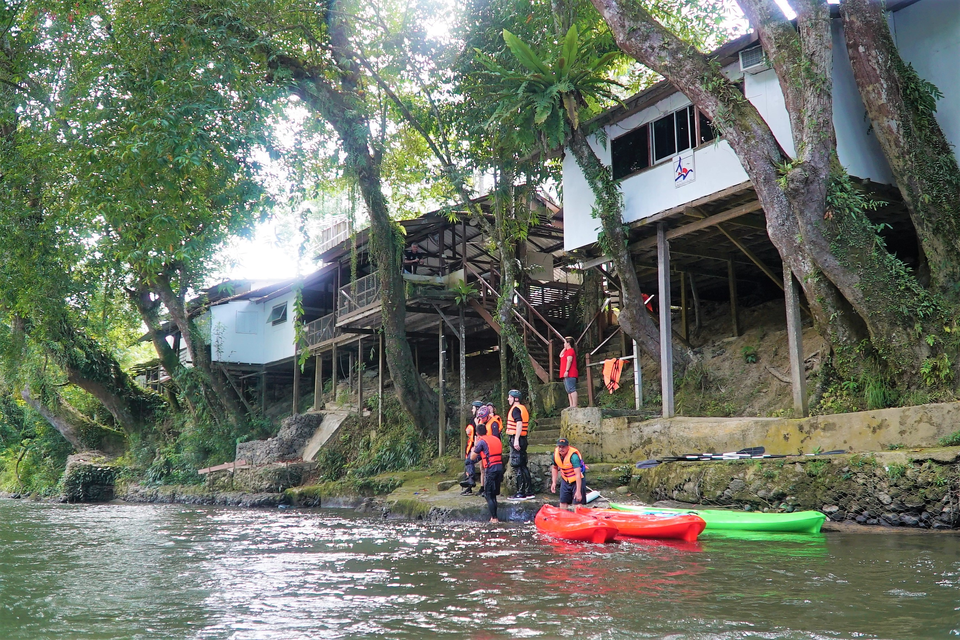
A pioneering architect takes on Temburong
Nestled on an acre next to the final turn along Batang Duri which leads to the Ulu Temburong National Park,
The son of a fisherman turned machine operator from Kg Ayer, Dato Idris’ entrepreneurial journey has been fueled by creative ambition and steely determination. But his guiding principle of never settling arguably comes from his father, who raised his eight children selflessly insisting they pursue higher education at his own expense.
“Most of my
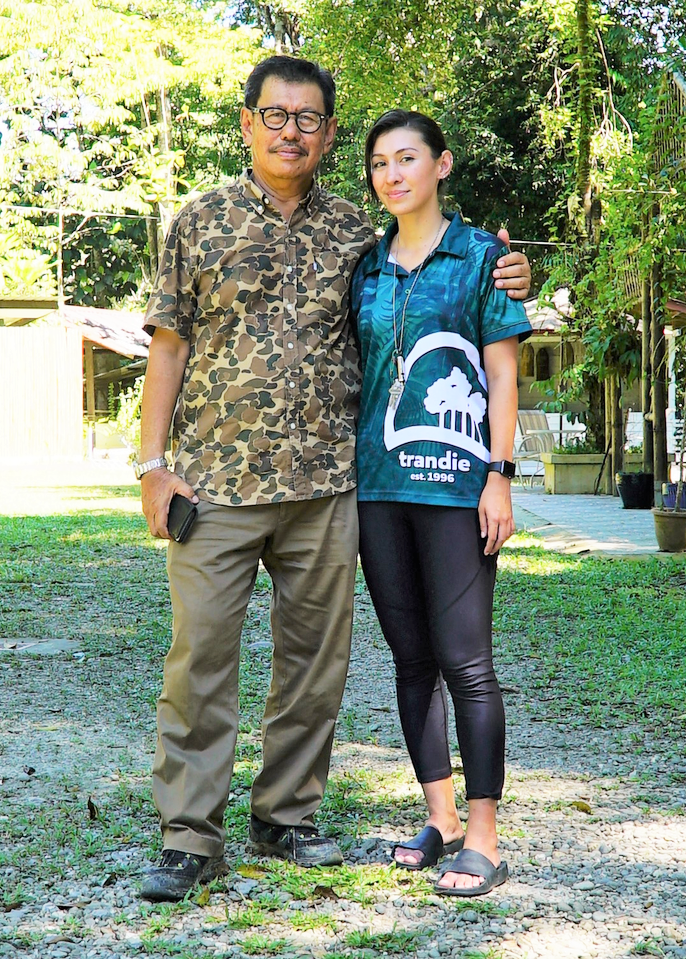
By the 1970s, Dato Idris earned several scholarships racking up a diploma and a degree in architecture from Malaysia and Australia. Upon returning to Brunei, he began working at the Public Works Department and within five years became its head architect.
But climbing the government ranks was never Dato Idris’ lifelong ambition. In 1985, he left his post and became one of the first Malay architects to start their own firm. His untempered enthusiasm was slightly premature, as business was unexpectedly
After holding out on a few small contracts in his opening years, he landed his first big project, the International Convention Centre. His firm then went on to chart a
In 1991, a development far from the capital began to take effect. The forests of the Ulu Temburong National Park became officially protected, and discussions of building a lodging of sorts nearby – that would double as a training centre for youth – began to emerge. With Brunei Shell Petroleum financing project, the Outward Bound Brunei Darussalam (OBBD) was created, and Arkitek Idris won the tender for its design.
‘It never really took off’
By 1995, OBBD’s construction was mostly complete. The multi-million dollar project, situated along the Temburong river, was split into an operation and a logistics centre, each a few kilometeres apart.
It’s tall,
Dato Idris can’t comment publicly on the current state of OBBD – the project was handed over its government custodian, the Ministry of Culture, Youth and Sports. But it remains one of his proudest achievements, and was his only project that went on to be a finalist of the prestigious Aga Khan Award for Architecture.
“With the Ulu (park) gazetted and OBBD’s construction, Temburong was set to be the next big tourist destination,” recalls Dato Idris. “Trandie came into the picture first as a terminal building, a sort of rest house that we personally built at the end of the road for visitors to stop before you moved on (to the park).”
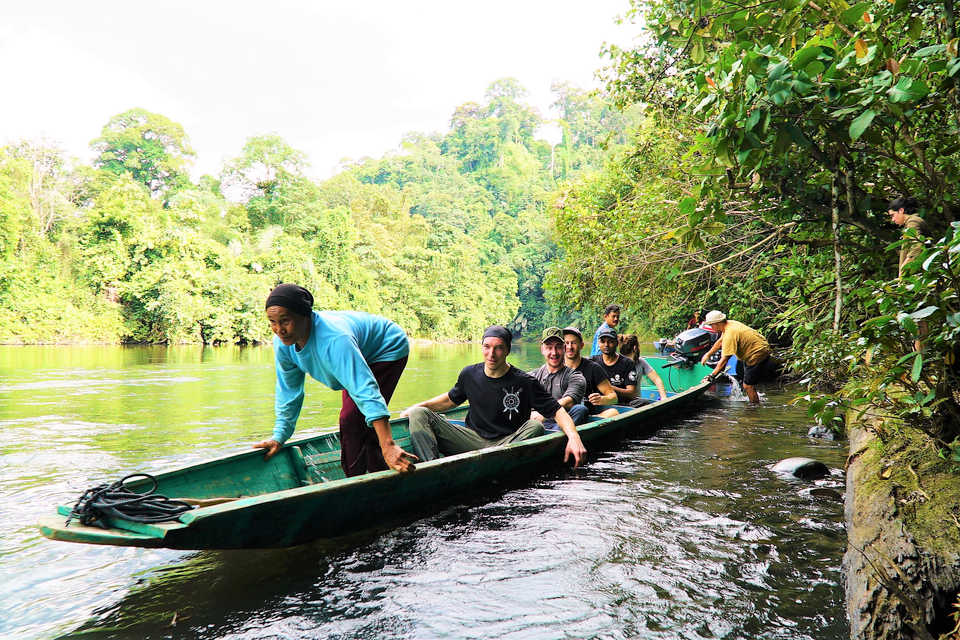
OBBD was never truly commercialized however, which meant its lodging was never marketed openly by tour agents. Today, only one of its two sites appear to be operational. The Ulu National Park’s commercial lodging known as the Ulu Ulu resort, only came two decades later, through a partnership with Sunshine Borneo Tours & Travel.
So it was left to the humble Trandie, built at a cost of $100,000, to fill the gap, but as Dato Idris candidly admits: “it never really took off”.
“
“But looking back our focus was not there (with most of our business in the capital). The truth the place was bleeding money, and we had to pump personal funds into it to keep it alive.
“The story gets quite sad after that. One of the partners passed away, and it was Hj Hussin Ahmad (the other remaining partner) that helped serve as overall manager. Unfortunately, he too fell sick a few years ago, and we were missing a leader.”
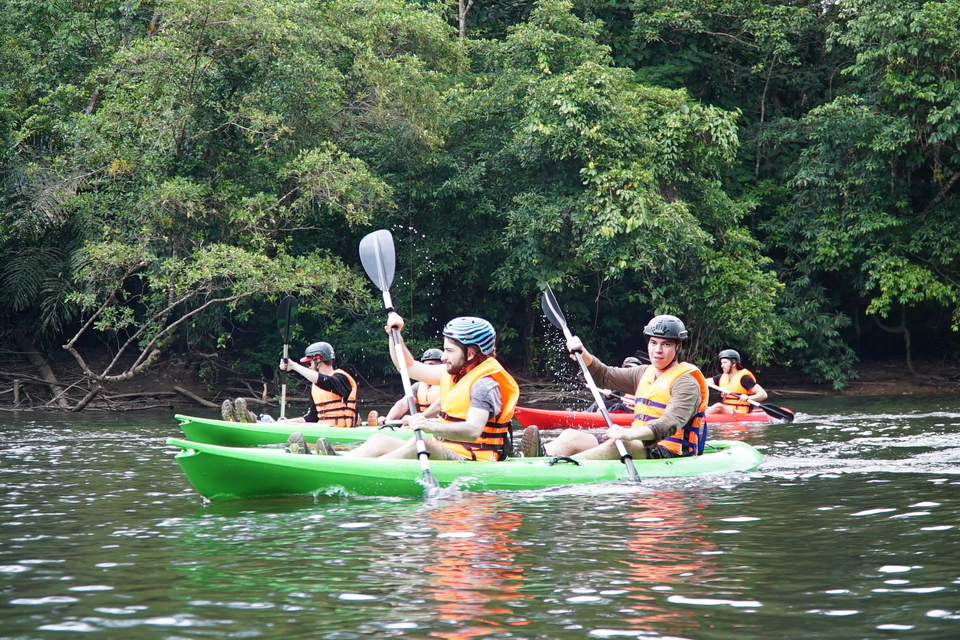
A kindergarten teacher finds a new home
Zati is the fourth of Dato Idris’ six children. A self-described introvert, she spent the majority of her time after graduating in early childhood education teaching kids in Brunei and Australia.
As the school year at International
When he decided it wasn’t for him, Zati stepped in, spending time at Trandie’s office in Telanai, before boldly deciding to relocate the operation – as well as surprisingly moving her living arrangements – to Temburong.
With no apparent training in hospitality, tourism or management, Zati – at least on paper – didn’t appear to have the key to reversing Trandie’s flagging fortunes. But when her father unboxes old photo albums to show what Trandie used to look like, he finds dozens of photos of a younger, free-wheeling Zati playing with her siblings in Temburong, hinting that perhaps there’s a deeper intagible that’s lead Zati to take up the mantle.
“I wanted to give this an honest shot,” says Zati. “
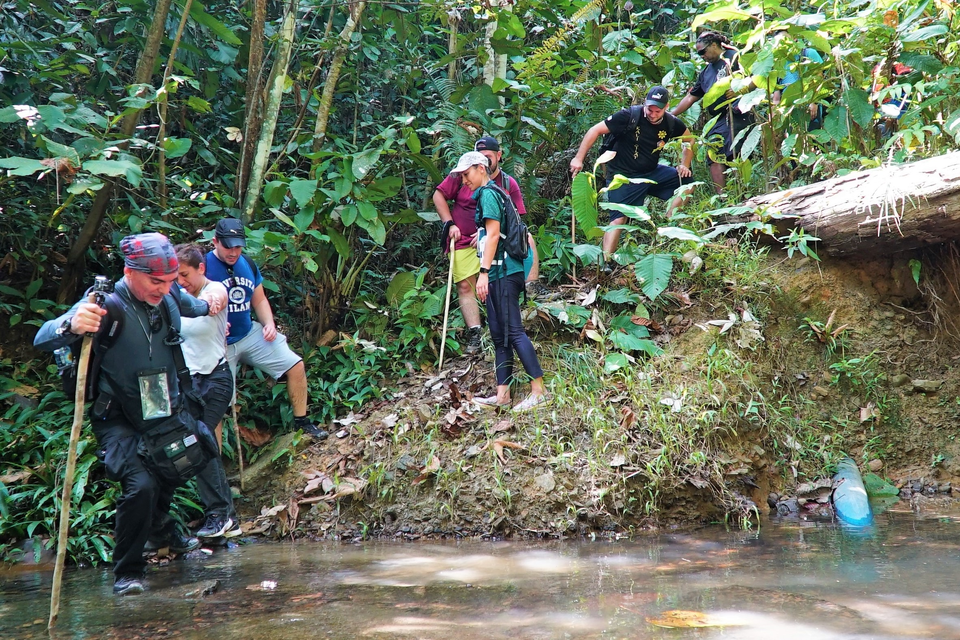
Management, forging networks and refurbishing the establishment: the revival of Trandie
After settling down in Temburong, Zati got to know her team of 14, some who live in the surrounding village, others who’ve come from Limbang and even a banker turned tour guide from Tutong.
Using a year she spent studying accounts, she began reviewing Trandie’s books, and from her unfinished studies in graphic design, began rebranding their marketing collaterals, along with revamping their digital and social media presence.
“We’ve fixed the place up; painted, adjusted the flooring, brought in new beds,” said Zati. “We restructured a lot of our packages as well; we now have much more than just the canopy walk and teambuilding; we have tours including Sg Apan (home to five waterfalls), medicinal trails (showing naturally occurring herbs and medicines) and night treks.”
Over the water, guests can either kayak or go tubing – floating downstream in a blown-up rubber tube shaped like a
For Temburong’s remote eco-lodges, it’s not just the accommodation that sells – it’s a combination of activities, food
“
“We’re also almost done building a camp-site about 10 minutes walk (from
As monthly guests doubled from 150 to 300, Zati reported to her father in the middle of 2018 that Trandie was becoming profitable for the first time.
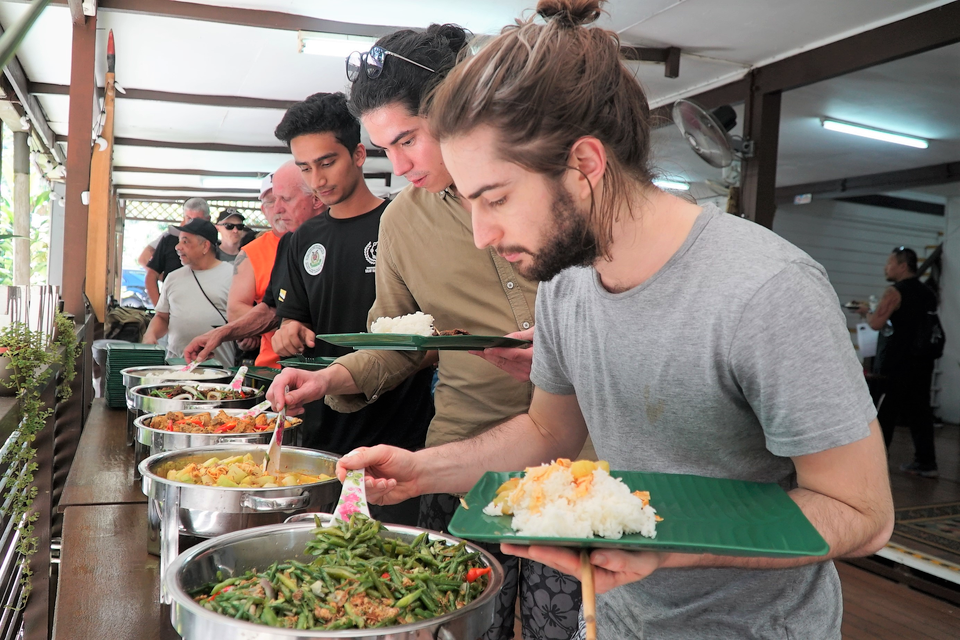
A bridge of opportunity
The 30km Temburong bridge linking the district known as Brunei’s ‘green jewel’ to the capital is slated for opening at the end of 2019. To state the obvious, the $1.6 billion project not only shortens the physical distance to
Easier access potentially means more customers, but the majority of Temburong’s eco-lodges are tucked away along Batang Duri, at least 30 minutes south from Jalan Labu where the new bridge will connect to, meaning that those en route for a getaway in Kota Kinabalu, Sabah will not be passing through.
“For those who want to explore Temburong’s nature and what is has to offer – the journey will be much safer and easier,” says Zati Idris. “But I don’t think we are expecting more passersby or random walks ins.”
As we sit down in the meeting room of Arkitek Idris’ head office back Telanai for an interview, it’s hard not the notice the dozens of accolades Dato Idris has stacked across the shelves, including a photo at an APEC meeting where he is sat tableside with His Majesty the Sultan and Yang Di-Pertuan of Brunei Darussalam as the national representative for APEC’s Business Advisory Council.
Business is quieter nowadays, Dato Idris admits, but for an architect who’s repertoire includes some of Brunei’s best-known buildings and landmarks, it’s a welcome surprise that it’s a comparatively small, boutique-style project built over 20 years ago that’s now on the cusp of getting widespread attention.
“I’m proud of what Zati’s done,” says Dato Idris. “With her, the place is finally coming around.”
Watch: Temburong through the lens of Trandie
To learn more and book a stay visit Trandie’s website and visit @trandiebrunei on Instagram for the latest updates. To get in touch directly contact +6738811179 or +6735250066/77.


